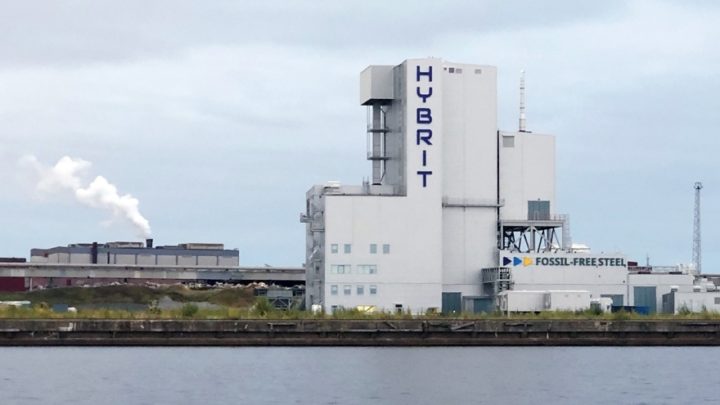Industrial Decarbonisation Strategy – not quite firing on all cylinders
Government strategies were expected to answer serious questions on getting to net zero, does the first hit the spot?
By Jonny Marshall
Share
Last updated:
March brought with it the government’s Industrial Decarbonisation Strategy, billed as the first in a number of sectoral plans to get the UK on track to net zero. Underneath a mixed bag of headlines and reactions, the 170-page plan unfortunately brings with it several causes of concern.
Recalibration
Strategies detailing how each emitting sector can be decarbonised have been pointed to by government as the places to provide direction and clarity on how to cut carbon – exactly what is needed to turn net zero targets into reality.

With many still to come – transport, homes, aviation, among others – the Industrial Decarbonisation Strategy is the best indicator we have of what they will look like. To build back government credibility on net zero, a move away from ‘targetism’ and toward tangible actions is the absolute minimum.
Ultimately, the Industrial Decarbonisation Strategy fails to make this leap.
Headline goals of cutting emissions from industry by two-thirds inside 15 years and by 90% by 2050 certainly set a vision, but without policies and pledges to underpin them it is hard to see how the government will avoid continued criticism of ‘not having a plan’ for net zero.
References throughout government modelling implies an understanding of a route for each industrial sector, cluster and process. If this information is doing the rounds inside Whitehall, why isn’t there more clarity in the Strategy?
Vague language also doesn’t help assuage these fears. Promises to ‘work with industry to understand what is required’ to ‘work with sector to explore options’ and ‘develop a communications plan to make industry aware’ don’t suggest significant progress has been made, and don't give confidence that this and other strategies will bring the answers promised.
Even the delivery plan – a yardstick against which to measure progress – falls into this trap with goals to ‘take initial steps’ and ‘work with stakeholders to understand’.
If this is the shape of more strategies to come, it doesn’t look good.
Urgency

By setting the scene – a £170bn contribution to the economy, 9% of GDP, 2.6 million jobs – the government highlights the risk of falling behind in the global race to clean industry.
Nowhere is this more apparent than in the steel sector.
While multiple other European countries are creating environments to bring forward investment in clean steel, the UK continues to sit on its hands.
The Clean Steel Fund, a £250m pot of cash to try and make up ground on overseas competitors remains largely unspent, with no plans to accelerate progress before the current 2023 timeline.
With the companies involved seemingly happy for things to stay this way (the same companies piling cash into projects elsewhere) surely onus is on the government to speed things up, ensuring that Britain’s steelmaking history continues for decades to come.
Listening to CCC advice on decarbonising primary steel production by 2035 is a good step forward, but pledges to ‘consider the implications’ and ‘discuss the date’ just aren’t commensurate with the pace of change taking place globally.
Headlines
A press release detailing already-existing pots of money (one for cutting carbon from public buildings instead of blast furnaces) left many feeling underwhelmed, especially when combined with the PR-first detail-later way these documents are presented now.
By leading on plans to insulate schools and not clear goals for cleaning up energy intensive industries, re-announcing money that had been already pledged, and continuing to sidestep both the challenges and opportunities industrial decarbonisation brings, the government has missed a trick.
Big announcements can set the tone for low carbon transitions. Previous goals to eliminate coal from the power sector, end the sale of petrol and diesel cars and lead the world on offshore wind resonated in the UK and overseas.
Shying away from comparable announcements on industry brings with it some fairly serious questions on commitment.
Priced
Saying this, there is one glimpse of clarity in the Strategy – an aim to rely on carbon pricing to curb industrial emissions.
A pledge to ‘use carbon pricing to as a tool to send a clear market signal’ will be a boon for campaigners calling for more widespread carbon taxes, but applying them without a selection of accompanying policies could lead to undesired consequences.
The commencement of a UK-only emissions trading scheme and growing hype over carbon border adjustments pours pressure on the current practice of dishing out more than £1bn-worth of free allowances in the UK every year.
The inherent incompatibility of unpriced emissions and adjustments at borders means, ultimately, these costs will have to be borne by the companies that pollute. This is likely to mean big changes for some parts of industry, bringing big risks if not done well.
For now, the government is only seeking views – the very first step in making it happen – but references to the EU carbon border starting to take shape in June means that there is limited time for the UK to ensure it doesn’t fall behind.
Share